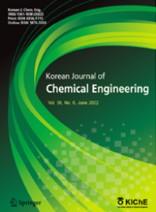Overall
- Language
- English
- Conflict of Interest
- In relation to this article, we declare that there is no conflict of interest.
- Publication history
-
Received June 24, 2023
Accepted November 17, 2023
- Acknowledgements
- Natural gas sweetening · Facilitated transport mechanism · Modifi ed silica nanoparticle · Mixed matrix membrane · Hydrogen sulfi de
-
 This is an Open-Access article distributed under the terms of the Creative Commons Attribution Non-Commercial License (http://creativecommons.org/licenses/bync/3.0) which permits
unrestricted non-commercial use, distribution, and reproduction in any medium, provided the original work is properly cited.
This is an Open-Access article distributed under the terms of the Creative Commons Attribution Non-Commercial License (http://creativecommons.org/licenses/bync/3.0) which permits
unrestricted non-commercial use, distribution, and reproduction in any medium, provided the original work is properly cited.
Most Cited
Enhanced Natural Gas Sweetening with Ultralow H 2 S Concentration via Polycarbonate-Silica Mixed Matrix Membranes
https://doi.org/10.1007/s11814-024-00043-2
Abstract
Mixed matrix membranes (MMMs) are brought up as prospecting media to sweeten natural gas in recent decades. But the
majority of experiments have conducted on CO 2 /CH 4 gas pair separation, and H 2 S removal from CH 4 through MMMs has
been paid less consideration. Thereupon, polycarbonate (PC) permeability and permselectivity as a polymer with inherent
gas transport properties and two PC-based MMMs containing octylsilane (OS) and polydimethylsiloxane (PDMS)-modifi ed
nanosilica were investigated under various operational conditions for this gas couple. The infl uence of operational parameters
including transmembrane pressure, feed temperature, H 2 S inlet concentration and physical aging on the permeability
of mixed gas and selectivity of the H 2 S/CH 4 pair was assessed. It was observed that addition of silica nanoparticles causes
more H 2 S permeability and selectivity. As a result, it can be used for methane upgradation. Membranes fabricated with
PDMS-modifi ed nanosilica showed the highest permeability of H 2 S and also the superior selectivity of H 2 S/CH 4 . Therefore,
it could be possibly applied to mitigation of H 2 S concentration in the outlet gas stream.

